
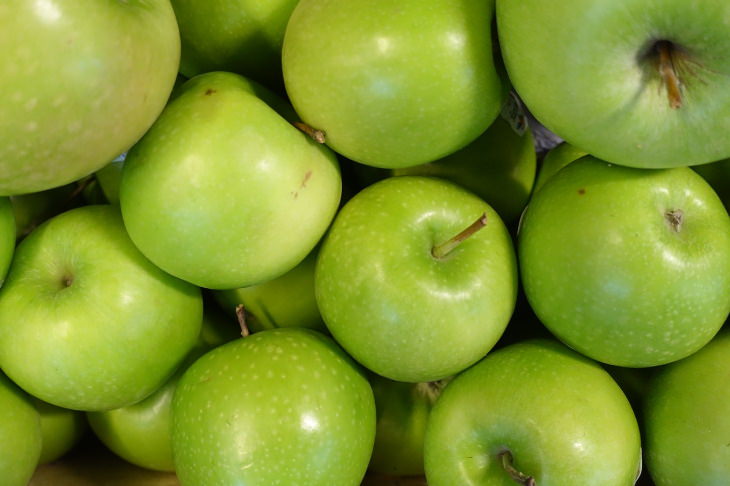
The Granny Smith is an apple variety you’ll find in every grocery store in the US, as it’s been one of the top-ranking apples in terms of sales for several years. These apples have originated in Australia, and they’re a mix of domestic and wild apples. The dense and crisp texture of Granny Smith makes it the most favored apple for making pies.
Color: Green with thick skin and a yellowish blush when ripe
Season: September - October
Flavor: Sweet, juicy, with tart and acidic undertones
Used for: Pies, tarts, salads, juices, and cider.
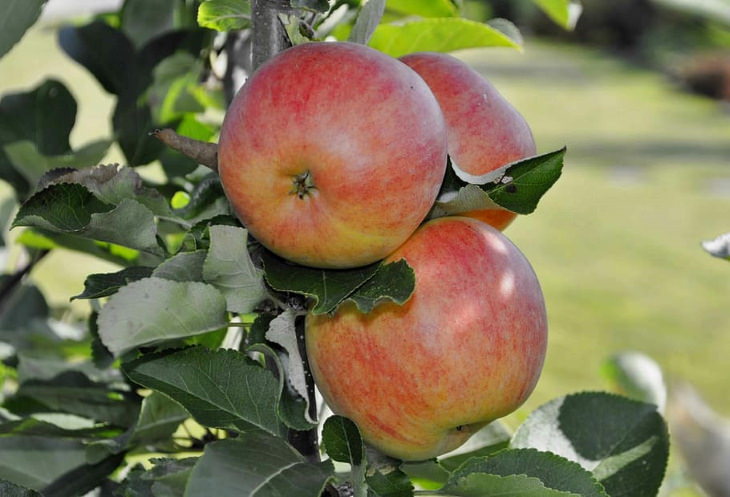
Named after Mount Fuji, this Japanese apple was first developed in the 1930s, and it appeared in the US in the 1980s. Favored for their fruity flavor and versatility, Fuji apples are one of the best-selling apples in the US today.
Color: Red with yellowish undertones
Season: November - December
Flavor: Mildly sweet and tart, with citrus and honey notes
Used for: Fresh eating, baking, salads, juices, and cider.
Related Article: Would You Try Any of These Crazy Apples?
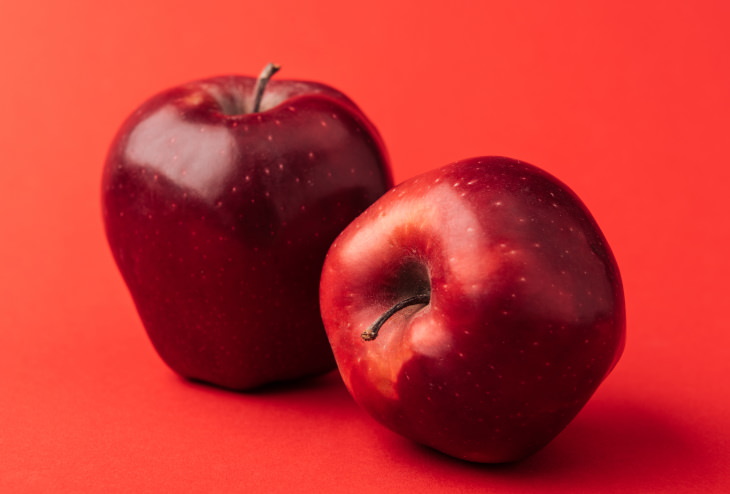
The story of the Red Delicious is a cautionary tale. Between 1968 and 2018, the Red Delicious was the most widely-grown apple variety in the US, but the apple became a victim of its own popularity. Farmers started breeding for color and appearance instead of taste, and the once juicy and sweet Red Delicious lost its flavor and is now known mainly as the least tasty apple variety. That said, if you prefer a mild and sweet taste, the Red Delicious may be for you.
Color: Deep red, with a thicker skin
Season: September - October
Flavor: Mildly sweet
Used for: Fresh eating.
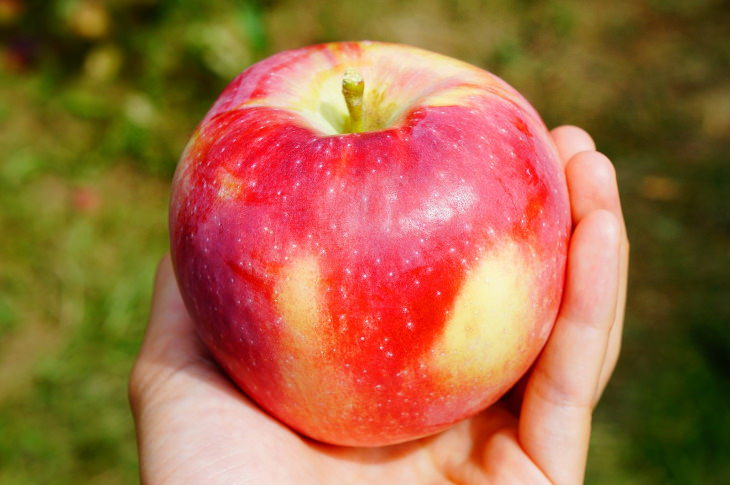
Image Source: Jiaqian AirplaneFan/ Wikimedia Commons
The McIntosh is the national apple of Canada. Discovered at the beginning of the 19th century by one John McIntosh, this Canadian apple is extremely popular due to its versatility and a long growing season. The McIntosh is easy to peel, and it works extremely well for both snacking and cooking.
Color: Vivid red with green skin
Season: September - December
Flavor: Exceptionally crisp and juicy, sweet and tart, with spicy notes (flavor fades when stored in the cold)
Used for: Baking, cider, juices, and fresh eating.
Related Article: 13 Great Ways to Use Apples Around the House
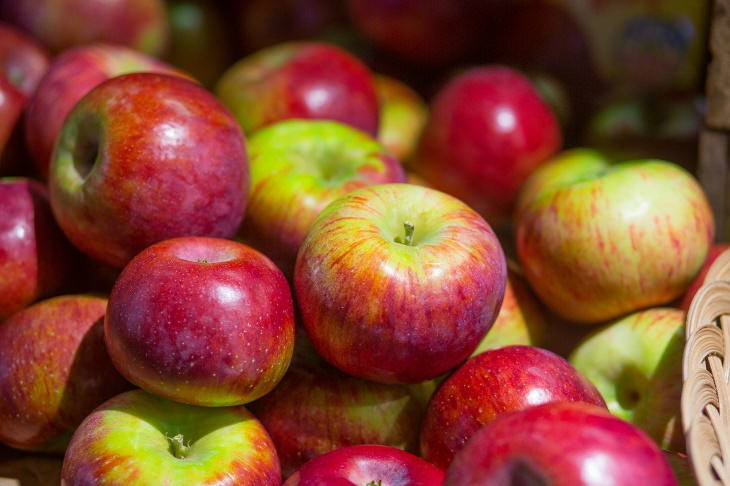
Cortland apples are especially beloved in New York. These apples are related to the McIntosh, and they’re a common apple variety among home growers due to the tree’s resistance to many diseases. Cortland apples work especially well in salads and charcuterie boards because they don’t turn brown very fast.
Color: Bright red with darker red streaks and a green blush
Season: September - October
Taste: Juicy with a sweet-sour flavor, sometimes described as wine-like
Used for: Salads, charcuterie boards, preserves, ciders, juices, and fresh eating.
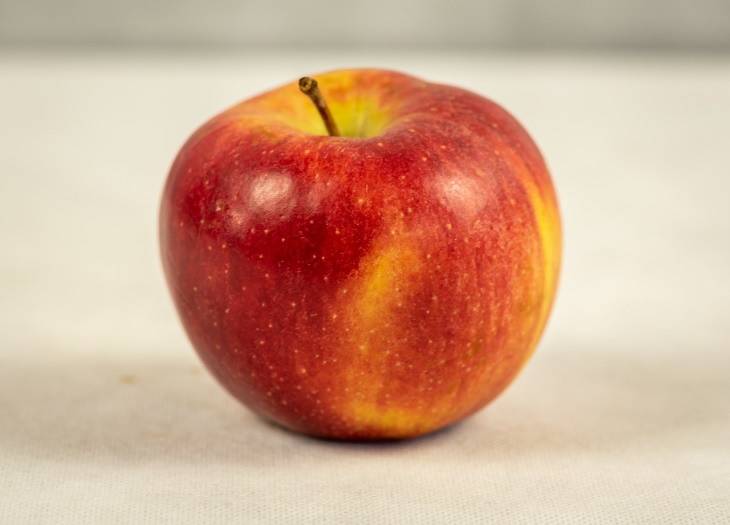
Due to their versatility and ease of growing, Braeburn apples are among the most-favored apples for home growers and grocers alike. These apples were invented in New Zealand by breeding Granny Smith and Lady Hamilton apple trees. Like the Granny Smith, these apples can withstand high temperatures without turning mushy, which is why they work perfectly for baking.
Color: Yellow and red (or pink) with green undertones, with a yellow flesh and thin skin
Season: September - October
Flavor: Juicy, sweet, and tart, with notes of pear and nutmeg
Used for: Baking, salads, and fresh eating.
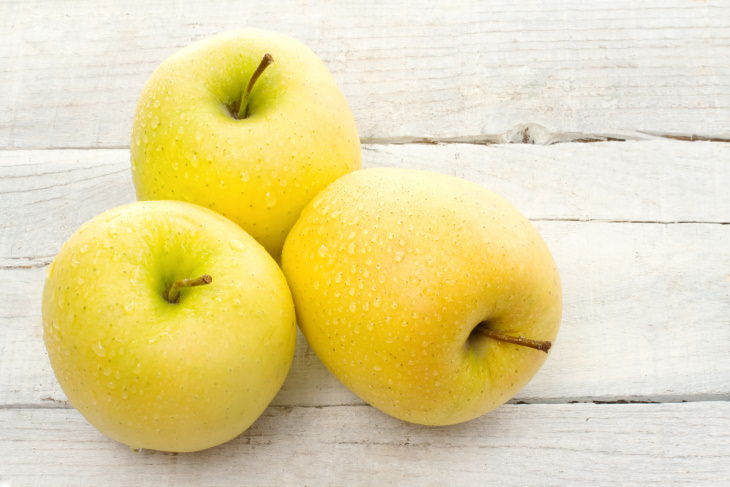
The Golden Delicious isn’t closely related to the Red Delicious, but they were picked up by the same manufacturer, hence the resemblance in the name. The Golden Delicious was discovered in West Virginia in 1905, and it is now among the most popular apple varieties in the country.
Color: Pale green to yellow, with white flesh
Season: September - October
Flavor: Balanced sweet and tart, firm and crisp texture
Used for: Baking, sauces, juices, and fresh eating.
Related Article: 5 Delicious Ways to Use Up Overripe Apples
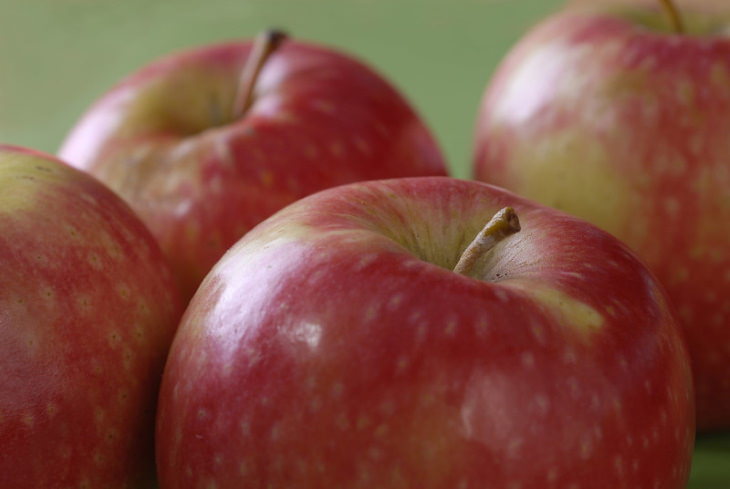
Pink Lady was one of the first apples to be trademarked. Developed by John Cripps, the Australian apple was created by crossing Golden Delicious with Lady Williams apples. The trademark is owned by Apple and Pear Australia Limited, and the company oversees that each apple labeled as Pink Lady has a specific appearance, sugar content, and crispness. Pink Lady apples are usually on the larger side, they are extremely versatile, slow to brown, and have an unusually long growing season too.
Color: Pinkish red, with yellow background and white flesh
Season: April - October
Flavor: Balanced sweet-tart, with thin skin and a crisp texture
Used for: Baking, pies, salads, charcuterie boards, and fresh eating.

In 2018, the popularity of the Red Delicious as America’s top-selling apple was surpassed by Gala. America’s favorite snacking apple, Gala apples were developed in New Zealand by breeding the Golden Delicious and Kidd's Orange Red.
Color: Pink and orange stripes on a yellow background, with a thin skin
Season: August - September
Flavor: Sweet, citrusy, and aromatic
Used for: Applesauce, pies, salads, and fresh eating.
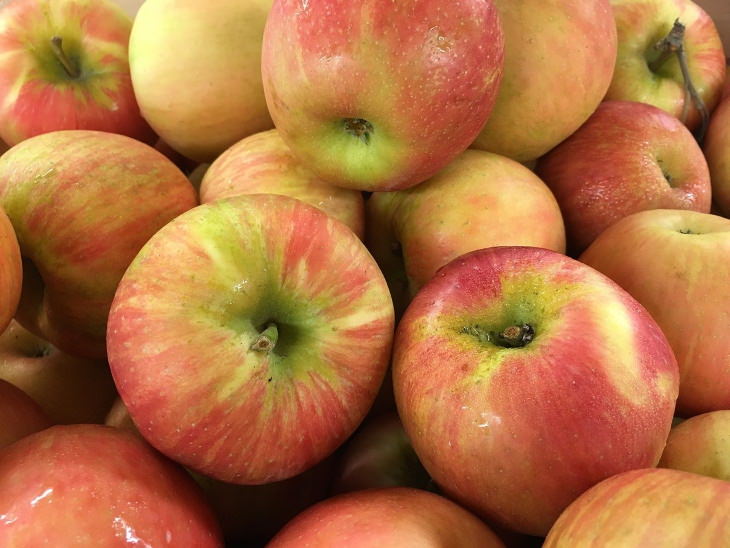
Let’s finish our list with an unusual apple. The Honeycrisp is an emerging star in the apple world - a superbly juicy but also crunchy apple with a balanced flavor profile. Honeycrisp apples were bred by the University of Minnesota in the 1970s, and they are the 5th most-grown apple in the country today.
Color: Red with pale yellow and green undertones
Season: September - November
Flavor: Juicy, sweet, tart, and aromatic
Used for: Pies, baking, and salads.
Share this information with those who like apples!